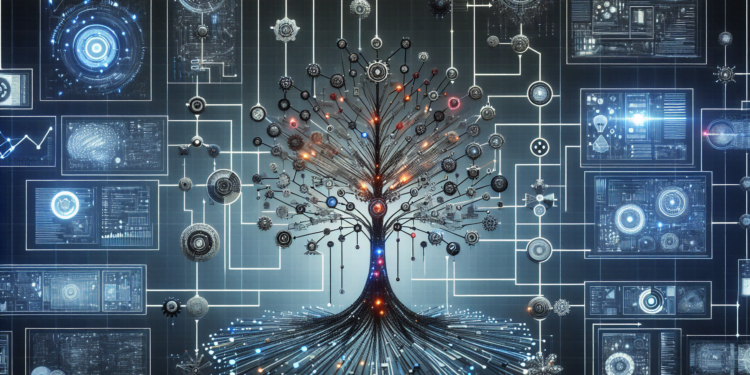Decision Tree learning systems have gained significant importance in Artificial Intelligence (AI) due to their ability to generate comprehensible and effective models from heterogeneous data. A Decision Tree represents a classification or regression function graphically, as a hierarchical tree-shaped decision structure. Internal nodes represent tests on attributes, branches represent the outcomes of these tests, and each leaf node assigns a value to the response variable.
Advances in Decision Tree Learning Algorithms
The most prominent methodology for the construction of Decision Trees is the ID3 algorithm and its successors, C4.5 and C5.0, created by Ross Quinlan. They use an attribute selection criterion based on Information Theory, specifically entropy and information gain. Alternatively, CART (Classification and Regression Trees) utilizes the Gini index as a measure of impurity.
Recently, advances in Decision Tree algorithms have focused on optimizing their performance and generalization ability. Algorithms such as SLIQ, SPRINT, and BOAT have emerged to handle large volumes of data, offering strategies to manage memory load and speed up the tree construction process. Moreover, there has been increasing interest in pruning and ensemble methods like Random Forests and Gradient Boosted Decision Trees, which combine multiple trees to enhance stability and prediction accuracy.
Emerging Practical Applications
Decision Trees are widely used in areas of medical diagnostics, financial analysis, customer relationship management (CRM), quality control in manufacturing, and as the basis for expert systems in various disciplines. Through the development of efficient algorithms for their construction, Decision Trees scale appropriately to solve large and complex data problems, encroaching upon the realm of predictive analytics and Big Data.
A notable emerging application is the integration of Decision Trees with deep learning techniques, such as neural networks, for the creation of hybrid models that seek the interpretative transparency of trees with the predictive power of deep learning. These models are used in the interpretation of medical images, real-time fraud detection, and in personalized recommendation systems.
Comparison with Previous Works and Future Directions
When compared to older AI algorithms, Decision Trees offer a balance between accuracy and comprehensibility that was not possible with simple perceptrons or heuristic rules. Unlike neural networks, trees provide transparency in decisions which makes them auditable and in compliance with emerging regulations for ethical and responsible AI.
Looking to the future, research on Decision Trees is geared towards improving robustness against imbalanced data and the ability to handle high-dimensional features, leveraging dimensionality reduction techniques and representation learning. The exploration of the balance between supervised and unsupervised learning in the context of trees is another developing avenue.
Relevant Case Studies
A relevant case study is the use of Decision Trees in the financial sector to model credit risk. Here, the trees have enabled financial institutions to accurately identify factors contributing to risk, offering a detailed explanation of the conditions under which a loan may be considered high risk.
Another example is their use in precision agriculture, where Decision Trees assist in the decision-making process of when and where to plant, irrigate or fertilize, increasing efficiency and productivity based on environmental and soil data. The clarity in decision making has become an asset for consulting and educating farmers, who, based on this model, can understand and execute agricultural strategies with greater confidence.
Conclusion
Decision Trees in Artificial Intelligence represent a methodology of undeniable value, balancing predictive accuracy and interpretative clarity. Recent advancements in algorithms and practical applications are expanding knowledge frontiers, transforming countless sectors and forecasting a future of sustained innovation and increasingly intelligent and personalized applications.






















